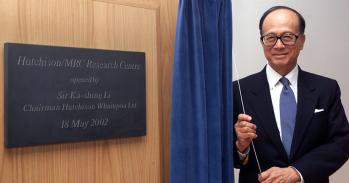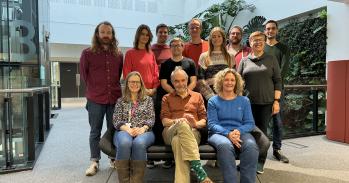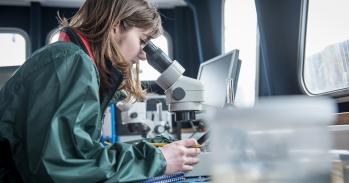
Arts Council England grants £87,582 to create online digital archive of Fitzwilliam Museum manuscripts.
Arts Council England grants £87,582 to create online digital archive of Fitzwilliam Museum manuscripts.
This project will see the very latest digital technology used to understand the complexity of these documents and share them with as many people as possible.
Hedley Swain, Arts Council England
The Fitzwilliam Museum, Cambridge has been granted £87,582 by Arts Council England to allow greater permanent access to its collections of illuminated manuscripts through a new digital resource. The Digital Layers online archive will explore a wealth of images using layer and zooming techniques inspired by internet mapping tools to show the historical, cultural and scientific secrets of the manuscripts.
The Fitzwilliam Museum and the colleges of the University of Cambridge have one of the largest, finest and most historically important selection of illuminated manuscripts in existence. Fragile and sensitive to light, temperature and humidity, the manuscripts can only be displayed for short periods of time under special conditions to protect their delicate materials and pigments.
Illuminated manuscripts are the most representative and best-preserved examples of medieval and Renaissance painting, doubling as portable galleries of artistic traditions through the centuries. The manuscripts collections are one of the most popular at the Fitzwilliam, with exhibitions such as the Cambridge Illuminations in 2005 drawing record numbers of visitors. Extensive research and digitisation of the collection, will allow enthusiasts and researchers world-wide to explore the manuscripts up-close and in-depth as has never been possible before.
The tools created for the Digital Layers project will be inspired in part by commonly used internet mapping and visualisation resources such as Google Earth and the WorldWide
Telescope project (http://www.worldwidetelescope.org). They will explore the different layers of the manuscripts uploaded online, allowing the viewer to examine its creation, from original sketches hidden beneath the illuminations, to the type of pigments, inks, and paint binders used. These different layers will also reveal secrets about artists and patrons: where and when the manuscripts were made, how did highly-skilled professionals collaborate on their production, and how did owners use them over time and across countries.
All of this incredible detail and information has been made possible by two research projects being run by the Fitzwilliam; the Cambridge Illuminations and MINIARE.
The Cambridge Illuminations continues to research over 4000 illuminated Western manuscripts and pre-1500 printed books from the Fitzwilliam and the Cambridge Colleges, bringing them together in a multi-volume series of catalogues.
Launched in February 2012 the MINIARE project is playing a major part in the current revolution in scientific analysis of works of art - moving away from invasive techniques that take samples to using advanced imaging and spectroscopic techniques to analyse manuscripts in depth without even touching their surface.
The field of non-invasive analysis of illuminated manuscripts is still in its early days. With opportunities to connect with science research across Cambridge University, the Fitzwilliam is uniquely placed to develop cross-disciplinary methods of comprehensive analyses, sharing the discoveries with colleagues worldwide.
Some of the analytical methods employed include fibre optic reflectance spectroscopy and X-ray fluorescence, as well as scientific imaging techniques such as photomicroscopy and infrared reflectography. Using a variety of techniques, researchers can identify the composition of pigments and reveal under-drawings and preparatory sketches in the manuscripts.
The images and information gathered from both projects will provide the foundation for the Digital Layers portal. It will play an essential part in the Fitzwilliam Museum’s bicentenary exhibition in 2016, which will display the Museum’s finest illuminated manuscripts to international audiences.
The tools created for Digital Layers will be made available for re-use in Cambridge and beyond and it is hoped that the project will help set new standards in how museums can bring cutting-edge research to a wider audience.
The investment came through the Arts Council‘s Designation development fund which supports projects that ensure the long-term sustainability of Designated museum collections, and which maximise their public value and the sharing of best practice across the sector. Successful organisations use this money to improve their collections for the benefit of their audiences, improving enjoyment, understanding and engagement. In the University of Cambridge Museums both the Fitzwilliam Museum and the Sedgwick Museum of Earth Sciences were successful in securing grants to open their collections to wider audiences.
Hedley Swain, Area Director, South East, Arts Council England, said: “This is a really exciting project and one that we are delighted to be supporting through the Designation development fund. The Fitzwilliam Museum has incredibly important collections of illuminated manuscripts which give a wonderful insight into Medieval life. This project will see the very latest digital technology used to understand the complexity of these documents and share them with as many people as possible.”
This work is licensed under a Creative Commons Licence. If you use this content on your site please link back to this page.





